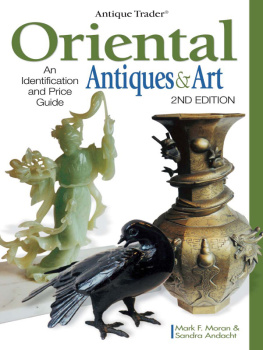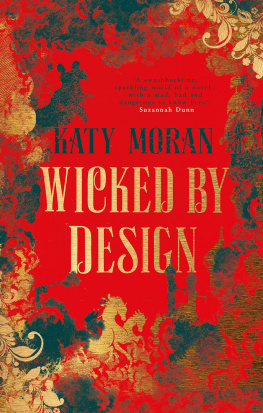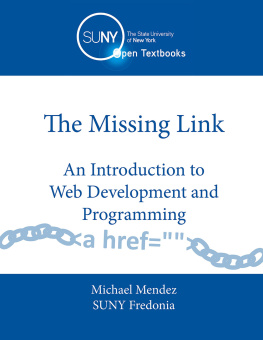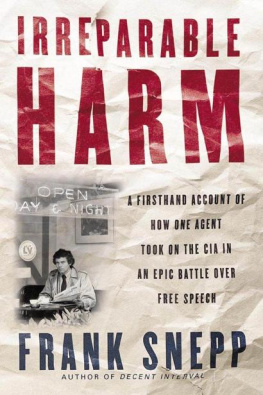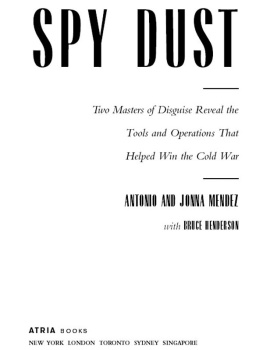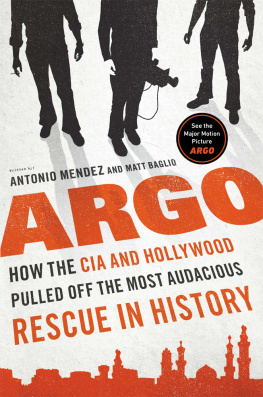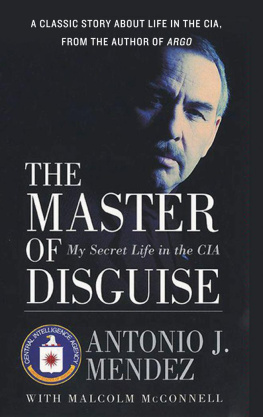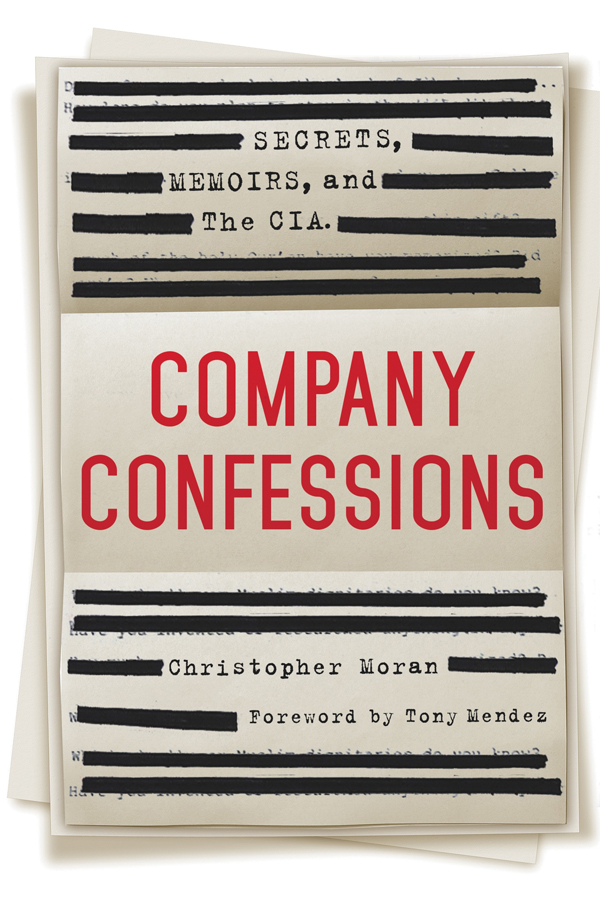Contents
Guide

The author and publisher have provided this e-book to you for your personal use only. You may not make this e-book publicly available in any way. Copyright infringement is against the law. If you believe the copy of this e-book you are reading infringes on the authors copyright, please notify the publisher at: us.macmillanusa.com/piracy.
British scholar Christopher Morans absorbing new book is a fascinating look at a subject very much on the mind of many former and current employees of the Central Intelligence Agency. The infamous Publications Review Board (PRB) is an unpredictable speed bump on a CIA authors road to the publication of any written work, whether a fully-fledged book or a letter to the editor. Anything else in between these two points, for that matter, written for public consumption by an agency professional, is required to run the gauntlet of the PRB. And that can be quite a difficult and capricious experience for an author. In fact, this is one of the basic premises of Morans detailed study of the intelligence memoirist.
Dr Morans approach is freshened by the fact that he comes to the subject as an outsider; not as a CIA officer or even a member of the intelligence community, but as a serious student of national security and the very process of collecting intelligence. As such, he is well-equipped to lift the exquisite veil of secrecy surrounding the CIAs review board and examine the machinery lying behind it. And what a machine he describes reminiscent of the giant Wurlitzer at the heart of The Wizard of Oz ; one that proceeds by fits and starts, then runs smoothly for a time, years perhaps, before it begins to cough and splutter again as a new CIA director takes the controls. The resulting chaos that repeatedly ensues is an amazing read. Company Confessions is a serious enquiry into the process of how successfully and appropriately the CIA has, through the machinations of the PRB, balanced national security with the American publics right to know.
Those CIA directors, and the chairmen of the PRB, have a very direct impact on the ability of a CIA officer to write a book, while the Agency maintains control of its information. Another key element of Company Confessions takes a penetrating look at the politics behind the PRB policies. While many in the intelligence community will recognise general trends emanating from the White House and filtering down into their agencies, Moran is able to form a much more direct cause-and-effect relationship regarding censorship and takes considerable pains to demonstrate this point with detailed descriptions of the way different authors and books have been dealt with. The results themselves frame the Agencys mixed feelings about its image, its story and even secrecy itself.
CIA director George H. W. Bush established the PRB in June 1977. Less than a year later new CIA director Stansfield Turners appointment by the Carter administration and his desire to usher in a new era of openness are discussed at length, not only Turners desire to make the public one of the direct beneficiaries of our efforts but his establishment of a Speakers Bureau at the CIA. To the Agencys old guard this was tantamount to a betrayal from the top; they feared that, by opening that vein, even a little, the control over secrecy, the life-blood of the Agency, would bleed away.
The case of former CIA officer Frank Snepp and his unauthorised publication of Decent Interval , an insiders unflattering book about Snepps CIA experience in the Vietnam War, illustrates the other side of the coin. Under Turners military-centric control, the PRB would not, could not, tolerate this insubordination. The CIAs cold fury rained down on Snepp, who published without PRB review and then suffered the retribution that this precedent-setting case deserved, bluntly drawing a line in the sand. Future publication without PRB approval would result in prosecution and, in this case, forfeiture of all profits from the book. Case made.
The final irony, of course, is the story of DCI Stansfield Turner himself and his attempts to publish his own memoir, Secrecy and Democracy: The CIA in Transition . Upon stepping down as head of the CIA, he was hoist on his own petard. Turner agonised through a hostile PRB review of his manuscript that lasted two years. Morans detailed documentation of Turners journey as CIA director is a fascinating behind-the-scenes look at the politics and policies of the PRB as they evolved during his tenure.
There are a multitude of stories, some of almost urban legend fame in the intelligence community. Even though the stories may be familiar to insiders, Moran brings a level of detail and a story-telling ability to each that will keep readers turning the pages, or swiping their screens.
Morans approach to his subject reads as fair and even-handed. There are plenty of examples that will cause a new evaluation of what those in the intelligence community would consider an old story; the author clearly does not have a dog in this fight. He does, however, deliver his research with fresh eyes and with a bent for balance. Perhaps it is this ultimately unbiased approach that brings him to a philosophical discussion of the well-regarded head of the CIAs Publications Review Board, John Hollister Hedley.
From 1996 to 1998, the PRB functioned under the chairmanship of Hedley. A thoughtful officer who described his role as that of an honest broker, he set out to find solutions, not create new problems. Attempting to set a new course, Hedley stressed that new realities required new thoughts. Redefining the role of the PRB, Hedley presented a new formula for the Board to consider in performing its duties: he emphasised not what had to be taken out, but what could be left in. The rules were relaxed, and the publication of Dewey Clarridges book A Spy for All Seasons and Richard Helmss memoir A Look Over My Shoulder followed. It was Helms, in fact, who began to advocate against the once-common adage that revealing the history of intelligence was unwise.
Christopher Moran calls out the Hedley era as a false dawn in terms of PRB process, with many of the old habits subsequently returning after Hedleys departure: too long to review the material, hostility toward unflattering material, inconsistent definitions of what is deemed classified. Additionally, discreet support has been lent to friendly treatment of classified material.
As the CIAs Chief of Disguise, when working with a surveillance team in a zone around Washington, DC, we had code names for use in our radio transmissions. The CIAs headquarters building in Langley, with a new addition cloaked in copper screening that appeared to be green glass, was christened The Emerald City. We always knew that there was a wizard inside, the Great and Powerful Oz, pulling the strings and levers, controlling the secrets. Christopher Moran provides a wealth of information documenting the CIAs internal battles over disclosure versus the right to secrecy. It is a revelatory read.
One of the pleasures of completing a book is taking a moment to thank the various people who helped it come into being. Andrew Lownie is perhaps the most good-natured and tirelessly attentive agent into whose hands a young author could hope to fall, and I count myself exceptionally fortunate in having him to represent my literary interests. From Biteback, I should like to thank Michael Smith for seeing the books potential, and Victoria Godden, for copyediting the manuscript to the highest professional standards and much more besides. From St Martins, deepest thanks to Thomas Dunne and Will Anderson. I am especially grateful to Will, the soul of patience, for guiding me step by step through the publishing process. Help has also flowed in liberally from many other corners of the press, and I can only add my praise to the long list of authors appreciative of their efforts.


